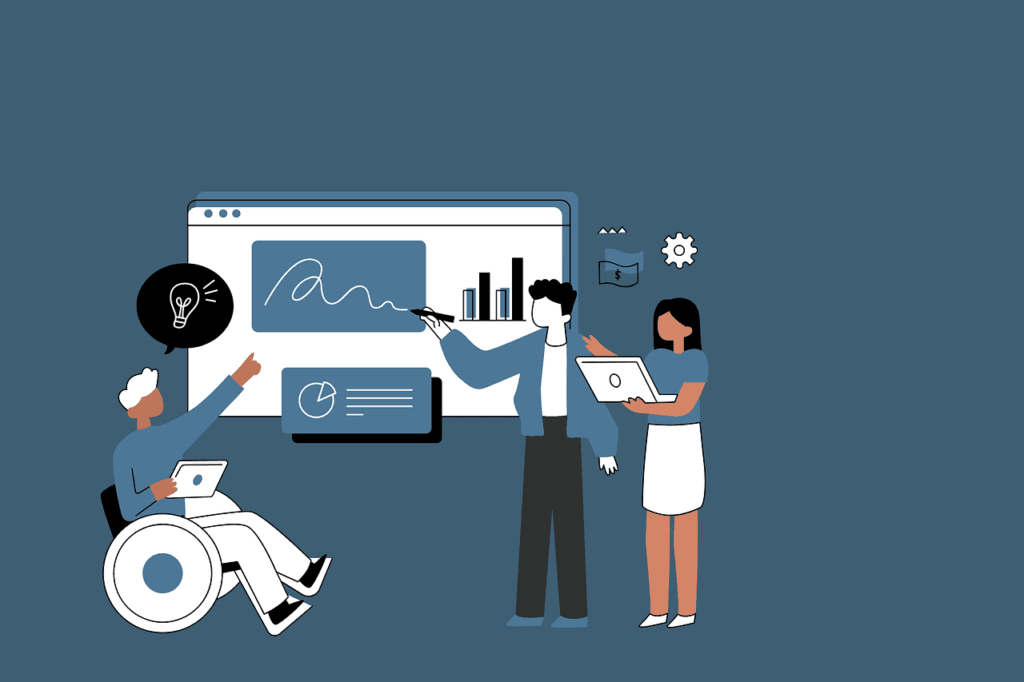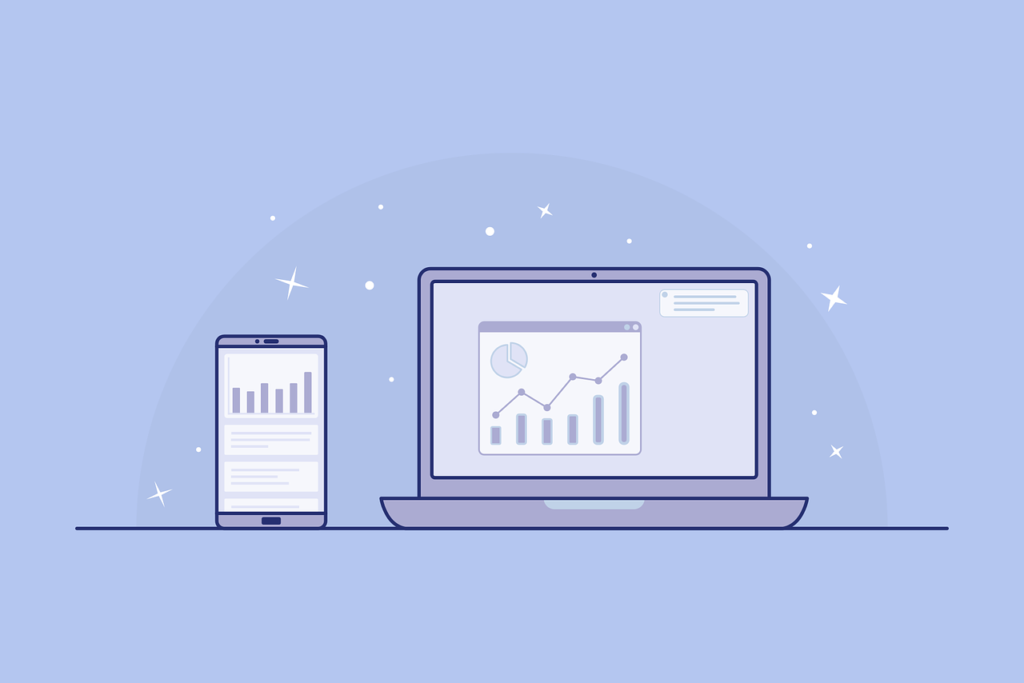In digital marketing, Google Analytics is often the go-to tool for tracking website performance, user behavior, and campaign success. It’s powerful, popular, and packed with insights. But as convenient as it is, relying exclusively on Google Analytics has some downsides. Whether it’s limitations in data accuracy, privacy concerns, or tracking gaps, Google Analytics alone may not be giving you the full picture. That’s why diversifying your analytics stack is essential to understanding your audience and making smarter marketing decisions.
In this article, we’ll explore the risks of relying solely on Google Analytics, as well as alternatives you can use to build a more robust analytics approach.
The Risks of Relying Solely on Google Analytics
1. Privacy Concerns and Compliance Issues
Google Analytics collects an immense amount of data, but this data collection has raised serious concerns about user privacy. Countries in Europe have implemented stringent data privacy regulations, such as the General Data Protection Regulation (GDPR), which limit how companies collect and store user data. These laws can restrict the extent to which you can use Google Analytics without potentially violating privacy laws.
For example, Google Analytics may collect personally identifiable information (PII) inadvertently, even though it technically restricts this type of data. And with increasing legal scrutiny in regions like the EU, businesses relying on Google Analytics face the risk of penalties for non-compliance. Using additional analytics tools that prioritize privacy can help protect your brand from potential legal issues while showing customers that you respect their data.
2. Incomplete View of the Customer Journey
Google Analytics is effective for tracking website interactions but falls short when it comes to multi-channel tracking. The customer journey isn’t always linear; people might find your brand through social media, browse your site, open an email, and then return later to make a purchase. Google Analytics has trouble connecting these dots across platforms, leaving gaps in your understanding of the full customer journey.
For example, if a user switches devices or interacts with your brand across multiple channels, Google Analytics may register these as separate sessions. As a result, you could miss out on understanding how users move between different channels and touchpoints. Considering a more holistic approach that includes additional tools can help close these gaps and offer a clearer picture of how people engage with your brand.
3. Data Sampling and Accuracy Issues
When your website traffic exceeds a certain threshold, Google Analytics resorts to data sampling. Instead of analyzing every session, it takes a sample to estimate behavior, which can lead to skewed or less reliable insights. For businesses with high traffic, this can mean that important details are missed or misrepresented, particularly in large-scale reports or when applying advanced segments.
Data sampling may lead to discrepancies in reports, making it harder to accurately assess performance. For example, a small percentage error in conversion rate or bounce rate might not seem significant, but it can mislead you about what’s working and what isn’t. For more accurate, complete data, especially at high traffic volumes, it may be necessary to use analytics tools that don’t rely on sampling.
4. Limited Customization for Advanced Analysis

While Google Analytics offers customization options like custom dashboards and metrics, it can be limiting for businesses that need deeper insights or specialized reports. Advanced users may struggle with the inflexibility of some Google Analytics features, especially when they want to track complex user behavior or create tailored funnels.
For example, eCommerce businesses often want to track user behavior at each stage of the purchase process, from browsing products to cart abandonment and checkout. Google Analytics’ standard features can make it challenging to create custom reports or analyze specific behavior flows, especially in real-time. Alternatives that offer greater customization can allow you to track more specific user actions and dig deeper into behavior insights.
5. Dependence on Third-Party Cookies
Google Analytics relies heavily on cookies to track user behavior, which presents a major challenge as third-party cookies are gradually being phased out by browsers like Safari, Firefox, and, eventually, Google Chrome. This reliance on cookies means that Google Analytics may not capture all user data accurately, leading to gaps in tracking and reporting as cookie support diminishes.
For marketers, this means your data might be less comprehensive over time. As privacy concerns grow, more users are also using ad blockers or adjusting their browser settings to block cookies, further affecting the accuracy of Google Analytics data. Choosing analytics tools that focus on privacy-first, cookie-less tracking can help you prepare for a future where third-party cookies are no longer reliable.
6. Real-Time Data Limitations
Google Analytics is often slow in reporting real-time data accurately, which can limit its effectiveness in fast-paced environments. For businesses running time-sensitive campaigns, such as flash sales or social media promotions, the delay in data updates can prevent you from making timely adjustments to optimize performance.
For instance, if you launch a campaign that’s underperforming, waiting on Google Analytics’ delayed real-time data could cost you potential sales or leads. Relying on additional tools that offer faster, more responsive tracking can help you manage campaigns more effectively and respond to changes on the fly.
Alternatives to Consider for a More Comprehensive Analytics Stack
While Google Analytics is undoubtedly useful, integrating additional tools can help provide a fuller picture and cover gaps in its functionality. Here are some of the best alternatives and complementary tools to consider.
1. Matomo: A Privacy-Focused Alternative
Why Matomo? Matomo is an open-source analytics platform that prioritizes privacy and data ownership. Unlike Google Analytics, it doesn’t rely on third-party cookies and allows you to host data on your own servers, which can help with GDPR compliance.
Matomo offers many of the same features as Google Analytics, including user tracking, goal setting, and funnel analysis, but with added privacy control. You retain full ownership of your data, and users appreciate the transparency it brings. For businesses with a focus on data privacy, Matomo can serve as a solid replacement or complement to Google Analytics.
2. Mixpanel: For Deeper Product and User Behavior Insights
Why Mixpanel? Mixpanel focuses on tracking user engagement, making it a great option for product-based businesses, SaaS companies, and apps. It provides real-time analytics, advanced segmentation, and funnel tracking without relying on pageview-based metrics, allowing you to see how users interact with specific features or products.
Unlike Google Analytics, Mixpanel provides detailed insights into user retention and allows you to track user actions at a granular level. For example, you can analyze the exact steps users take to complete a purchase, which is invaluable for optimizing user flows and improving engagement.
3. Adobe Analytics: A High-Powered Solution for Enterprise Needs

Why Adobe Analytics? Adobe Analytics is an advanced solution for large enterprises with complex data needs. It offers deep customization options, machine learning capabilities, and predictive analytics, allowing you to go beyond standard reporting.
Adobe Analytics integrates well with other Adobe products, making it ideal for companies already invested in Adobe’s ecosystem. With real-time data analysis and support for multi-channel tracking, it’s a comprehensive tool for businesses that need flexibility and precision in their reporting. For brands looking to go beyond Google Analytics’ standard features, Adobe Analytics offers almost limitless customization.
4. Piwik PRO: Analytics with Data Control and Privacy Compliance
Why Piwik PRO? Piwik PRO is similar to Matomo in that it’s privacy-focused, but it offers additional features designed for enterprise clients, including compliance with GDPR, HIPAA, and other data protection regulations. Piwik PRO can be hosted on your own servers or in the cloud, giving you control over data privacy.
Piwik PRO’s dashboard is familiar to Google Analytics users, making it easy to transition while providing greater data control. It’s a solid option for businesses in industries like healthcare or finance, where data compliance is critical.
5. Heap Analytics: Automatic Event Tracking for Deep User Insights
Why Heap? Heap Analytics is known for its automatic event tracking, meaning you don’t need to manually set up tracking for each user action. This feature is especially helpful for startups and smaller businesses that need insights into user behavior but lack the resources for extensive setup.
Heap captures every interaction, from clicks to form submissions, without requiring manual tagging, allowing you to analyze user behavior more comprehensively. It’s an excellent tool for businesses that want quick insights without the setup burden of traditional analytics tools.
6. Amplitude: For Product Analytics and Cohort Analysis
Why Amplitude? Amplitude focuses on product analytics, making it a top choice for SaaS companies and product-focused businesses. It excels at cohort analysis, helping you understand user retention and behavior trends over time.
Amplitude’s user-centric approach helps you understand how different segments of users interact with your product, providing a detailed view of user engagement and retention. This depth of analysis is something Google Analytics struggles with, making Amplitude a valuable addition for understanding long-term user behavior.
7. Clicky: Real-Time Analytics with a Simple Interface
Why Clicky? Clicky is a user-friendly analytics platform that emphasizes real-time data and ease of use. Unlike Google Analytics, Clicky updates data instantly, making it ideal for time-sensitive tracking.
Clicky also includes heatmaps and on-site analytics, providing insights into how users engage with specific pages. It’s a lightweight, accessible tool that’s perfect for small businesses or anyone who values simplicity and speed in their analytics.

Related: Check out our free tools:

Integrating Multiple Tools for a Holistic Approach
Building an Analytics Stack
Instead of relying on a single tool, consider building an analytics stack tailored to your needs. Google Analytics can still play a central role, especially for general website tracking, but combining it with other tools allows you to capture insights more effectively.
For example, you might use Google Analytics for high-level website data, Mixpanel for in-depth user behavior insights, and Clicky for real-time monitoring. Each tool fills a different gap, creating a more robust analytics framework that gives you confidence in your data.
Using Data Integration Tools for a Unified View
If you’re using multiple analytics platforms, integrating data can be challenging. Tools like Supermetrics, Tableau, or Google Data Studio allow you to merge data from various sources, giving you a single dashboard to monitor performance across all tools. This integration makes it easier to spot trends, compare results, and understand the full scope of your marketing efforts without switching between platforms.
Embracing a Diverse Analytics Strategy for Sustainable Growth
A diversified analytics strategy isn’t just about data; it’s about building a resilient foundation for your business’s future. With a variety of tools, you’ll be better equipped to face the ongoing challenges in digital marketing—whether it’s evolving privacy regulations, changing user behavior, or advancements in data-tracking technology.
When you’re not overly dependent on a single platform, you gain flexibility. You’ll be able to pivot quickly if a tool becomes obsolete or if new regulations restrict its use. Plus, by integrating insights from multiple perspectives, you’ll unlock a fuller understanding of what truly drives your customer interactions, where their pain points lie, and how you can continuously improve your offerings.
Customizing Your Analytics Stack Based on Your Needs

A key advantage of using multiple analytics tools is the ability to customize your stack based on specific business needs. Here’s a breakdown of how different types of businesses can approach building a tailored analytics stack:
For eCommerce Businesses: Google Analytics remains useful for tracking general website metrics, but eCommerce brands may want to add Heap for automatic event tracking, allowing them to understand user interactions on product pages, cart additions, and checkout flows in real time. Tools like Hotjar or Crazy Egg can also complement this stack by providing heatmaps and session recordings, which reveal how users navigate product pages and where they drop off.
For SaaS Companies: SaaS businesses benefit from tools that offer detailed cohort analysis and retention tracking. Adding Mixpanel or Amplitude to Google Analytics allows these businesses to see how different user groups interact with their software over time. This setup enables SaaS teams to understand user onboarding, identify where users encounter friction, and pinpoint which features drive long-term engagement.
For Content-Driven Brands: Content sites often rely on traffic sources from multiple channels, making tools like Adobe Analytics and Piwik PRO valuable additions for multi-channel tracking. Google Analytics can track site-wide performance, while Piwik PRO or Matomo provides more privacy-centric tracking for GDPR compliance. Real-time tools like Clicky can help monitor engagement metrics during high-traffic periods, like after a new post or product launch.
The Path Forward: Balancing Privacy, Precision, and Performance
As the digital landscape continues to evolve, privacy is becoming a core consideration for users and brands alike. Relying solely on Google Analytics can pose challenges in maintaining compliance with regulations like GDPR, CCPA, and upcoming laws on the horizon. By embracing tools that prioritize data control, privacy-first tracking, and cookie-less capabilities, you’re not only enhancing your analytics but also building trust with your audience.
Many of these alternative tools, like Matomo, Piwik PRO, and even newer cookie-less options, allow you to keep control of your data while respecting user privacy. Adopting a multi-tool approach aligns your business with the growing demand for privacy-focused solutions, helping you build a stronger, more transparent relationship with your users.
Future-Proofing Your Business Through Analytics Innovation
Data tracking technology will continue to evolve as the marketing landscape changes. New tools and methodologies will emerge, designed to offer more sophisticated insights, tighter privacy control, and enhanced data security. Staying open to integrating these innovations into your analytics stack will keep your business agile and competitive.
To future-proof your business, make it a habit to review your analytics setup regularly. Look for areas where your current tools might be falling short, consider emerging platforms, and be ready to adapt as technology advances. A flexible, diversified analytics strategy ensures you’re always equipped to gather the most accurate, actionable data possible.
Conclusion: Don’t Rely on a Single Lens
Relying solely on Google Analytics can limit your insights, restrict your flexibility, and increase your exposure to privacy and compliance risks. Diversifying your analytics approach provides a fuller, more accurate view of your customers and helps you make informed decisions with greater confidence.
By combining Google Analytics with alternative tools like Matomo, Mixpanel, or Heap, you’re able to capture a wider range of data, covering everything from real-time tracking and product insights to privacy compliance and in-depth behavioral analysis. Building a comprehensive analytics stack that includes multiple perspectives is essential for staying competitive in a data-driven world.
The key takeaway? Don’t rely on a single lens. Embrace a variety of analytics tools to deepen your understanding, enrich your data, and make the best choices for growth. By investing in a diverse analytics stack, you’re setting your brand up for more accurate insights and, ultimately, more sustainable success.
READ NEXT:
- Are Vanity Metrics Killing Your Marketing Efficiency? Here’s What to Track Instead
- Pinpointing Digital Marketing ROI: Why Your Metrics Aren’t Telling the Full Story
- Unlocking Real ROI in Digital Marketing: The Hidden Costs Draining Your Budget
- How Misaligned Marketing Funnels Are Blocking Your ROI Potential
- Best Digital Marketing Agency In Santa Ana, California
- Best Digital Marketing Agency In San Francisco, California





















